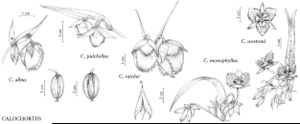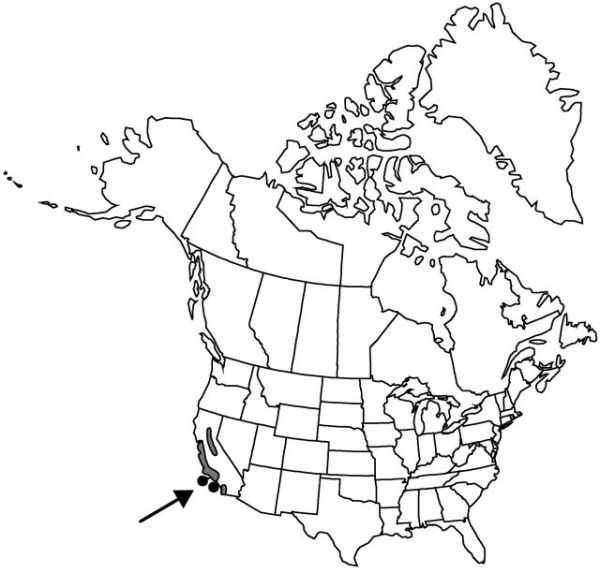Difference between revisions of "Calochortus albus"
Botanist 2: no. 98. 1838.
Common names: White globe-lily fairy lantern
IllustratedEndemic
Basionym: Cyclobothra alba Bentham Trans. Hort. Soc. London, ser. 2, 1: 413, plate 14, fig. 3. 1835
Synonyms: Calochortus albus var. rubellus Greene
FNA>Volume Importer |
imported>Volume Importer |
||
| (2 intermediate revisions by 2 users not shown) | |||
| Line 8: | Line 8: | ||
}} | }} | ||
|common_names=White globe-lily;fairy lantern | |common_names=White globe-lily;fairy lantern | ||
| + | |special_status={{Treatment/ID/Special_status | ||
| + | |code=F | ||
| + | |label=Illustrated | ||
| + | }}{{Treatment/ID/Special_status | ||
| + | |code=E | ||
| + | |label=Endemic | ||
| + | }} | ||
|basionyms={{Treatment/ID/Basionym | |basionyms={{Treatment/ID/Basionym | ||
|name=Cyclobothra alba | |name=Cyclobothra alba | ||
| Line 55: | Line 62: | ||
|publication title=Botanist | |publication title=Botanist | ||
|publication year=1838 | |publication year=1838 | ||
| − | |special status= | + | |special status=Illustrated;Endemic |
| − | |source xml=https:// | + | |source xml=https://bitbucket.org/aafc-mbb/fna-data-curation/src/2e0870ddd59836b60bcf96646a41e87ea5a5943a/coarse_grained_fna_xml/V26/V26_149.xml |
|genus=Calochortus | |genus=Calochortus | ||
|species=Calochortus albus | |species=Calochortus albus | ||
Latest revision as of 21:13, 5 November 2020
Stems usually branching, 20–80 cm. Leaves: basal persistent, 3–7 dm; blade linear, flat. Inflorescences 2–many-flowered. Flowers nodding; perianth ± closed at apex, ± oblong; sepals appressed to petals, ovate to lanceolate, 10–15 mm, glabrous, apex acuminate; petals usually white to pink, ± elliptic, 20–25 mm, sparsely ciliate, hairs distal to gland slender; glands ± depressed, proximal ciliate membrane 1/3–2/3 petal width; filaments equaling anthers; anthers oblong, apex obtuse or acute. Capsules nodding, winged, oblong, 2–4 cm, apex obtuse or acute. Seeds dark brown, irregular. 2n = 20.
Phenology: Flowering mid spring–mid summer.
Habitat: Shaded places in open woods and brush
Elevation: 0–2000 m
Discussion
Selected References
None.
Lower Taxa
None.

